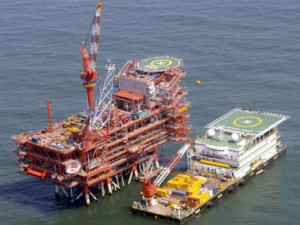Reliance Industries has warned the government that gas output at its KG-D6 basin may stop by 2015 if fresh capital expenditure is not announced.
In order to avoid such a shutdown, RIL and its British partner for the Krishna Godavri basin BP, has asked the government to approve a $225 million investment plan to prevent the production of gas from falling to zero.
KG-D6 output this week has dropped to below 30 million standard cubic metres per day (mmscmd) and is projected to further fall to 20 mmscmd by next year.
[caption id=“attachment_380243” align=“alignleft” width=“380”]  Reuters[/caption]
The two companies have reportedly warned that government that significant risks of a shut down exist around 2015-2016, and that immediate approval of capex will help it produce 0.6 trillion cubic feet from its D1D3 blocks at KD-d6.
RIL’s executive director PMS Prasad and BP India’s S Mukundan met the Oil Min on Friday to discuss these issues.
In addition to that, they are also seeking an approval to invest $318 million at a separate MA oil field in the KG-D6, which will add 0.2 tcf to the production.
In today, $543 million of capex in FY13 can increase output by nearly 1 trillion cubic feet, the company said.
However, the Oil Ministry on Tuesday asked Reliance Industries to share its records on the KG-D6 oilfield with the Comptroller and Auditor General of India for faster approval of four other blocks off the eastern seaboard of India.
Impact Shorts
More ShortsPetroleum Minister Jaipal Reddy has promised speedy clearance but said the CAG has recommended withholding of sanction to the work programme if it was denied access to RIL and BP’s accounts.
“Therefore, the company representatives were requested to make all the records and accounts of the KG D6 block available to the Comptroller and Auditor General as provided for in the Production Sharing Contract,” the government statement said.
Reliance holds a 60 percent stake in the block, while BP has a 30 percent share.
Canada’s Niko Resources Ltd , which has a 10 percent stake in the block, last month slashed the reserve estimate for the block. It estimated that total proved plus probable reserves at the block had decreased to 1.93 trillion cubic feet (tcf) as of March 31.


)

)
)
)
)
)
)
)
)



